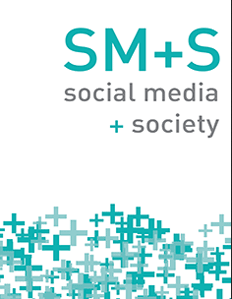Twitter (X) and the Commercial Determinants of Health: Characterizing the Most Amplified, Influential, and Connected Voices Driving Twitter Discourse About Tobacco Regulatory Policy From September 2019 to July 2021
IF 5.5
1区 文学
Q1 COMMUNICATION
引用次数: 0
Abstract
Tobacco content on Twitter (X) generally opposes regulation. Although a near real-time data source of the public’s response to prominent events heightens the allure of extrapolating public sentiment from Twitter content, tobacco policy sentiment on the platform may be more indicative of industry-affiliated top users. We examined 2 years of tobacco policy discussion on Twitter (X) at the user level ( N = 3,159,807 posts) from September 2019 to July 2021. We sampled the 100 most followed, amplified (retweets), influential (H index), and connected (betweenness centrality) users at three different time periods: pre-COVID (September 2019 to February 2020), COVID lockdown (March 2020 to March 2021), and post vaccine rollout (April to July 2021) to characterize top users. The Louvain method was used to partition users into communities based on retweet behavior. The 100 most amplified users received between 48% and 71% of all retweets across time periods, with e-cigarette advocates dominating the most amplified (64.7%), influential (38.4%) and connected users (42.1%). The vast majority of interaction took place in communities dominated by e-cigarette advocates, but only reaching 2.5% to 8.2% of users. We identified 58 tobacco policy top users who had 1,000 or more total retweets and were among the top 100 for any of our influence metrics at more than one time period. Among top users, 50 were e-cigarette advocates, and 24 had quantifiable ties to the tobacco industry. Practitioners and researchers should be wary of mischaracterizing industry public relations on social media as public sentiment.推特(X)和健康的商业决定因素:描述2019年9月至2021年7月期间推特上关于烟草监管政策的话语中最被放大、最有影响力和联系最紧密的声音
Twitter (X)上的烟草内容普遍反对监管。尽管公众对重大事件反应的近乎实时的数据来源增加了从Twitter内容推断公众情绪的吸引力,但该平台上的烟草政策情绪可能更能反映与行业相关的顶级用户。我们从2019年9月到2021年7月,在用户层面(N = 3,159,807条帖子)研究了推特(X)上两年的烟草政策讨论。我们在三个不同的时间段对100名最受关注、最受放大(转发)、最具影响力(H指数)和最具联系(中间性中心性)的用户进行了抽样调查:COVID前(2019年9月至2020年2月)、COVID封锁(2020年3月至2021年3月)和疫苗推出后(2021年4月至7月),以表征顶级用户。采用Louvain方法根据用户的转发行为将用户划分为社区。100名被放大最多的用户在不同时间段内的转发量占所有转发量的48%至71%,其中电子烟倡导者占据了被放大最多的用户(64.7%)、有影响力的用户(38.4%)和有联系的用户(42.1%)。绝大多数互动发生在以电子烟倡导者为主的社区,但仅占用户的2.5%至8.2%。我们确定了58个烟草政策顶级用户,他们的总转发量为1000或更多,并且在一个以上的时间段内,在我们的任何影响力指标中都名列前100名。在顶级用户中,有50人是电子烟倡导者,24人与烟草业有可量化的联系。从业者和研究人员应该警惕将社交媒体上的行业公关错误地描述为公众情绪。
本文章由计算机程序翻译,如有差异,请以英文原文为准。
求助全文
约1分钟内获得全文
求助全文
来源期刊

Social Media + Society
COMMUNICATION-
CiteScore
9.20
自引率
3.80%
发文量
111
审稿时长
12 weeks
期刊介绍:
Social Media + Society is an open access, peer-reviewed scholarly journal that focuses on the socio-cultural, political, psychological, historical, economic, legal and policy dimensions of social media in societies past, contemporary and future. We publish interdisciplinary work that draws from the social sciences, humanities and computational social sciences, reaches out to the arts and natural sciences, and we endorse mixed methods and methodologies. The journal is open to a diversity of theoretic paradigms and methodologies. The editorial vision of Social Media + Society draws inspiration from research on social media to outline a field of study poised to reflexively grow as social technologies evolve. We foster the open access of sharing of research on the social properties of media, as they manifest themselves through the uses people make of networked platforms past and present, digital and non. The journal presents a collaborative, open, and shared space, dedicated exclusively to the study of social media and their implications for societies. It facilitates state-of-the-art research on cutting-edge trends and allows scholars to focus and track trends specific to this field of study.
 求助内容:
求助内容: 应助结果提醒方式:
应助结果提醒方式:


